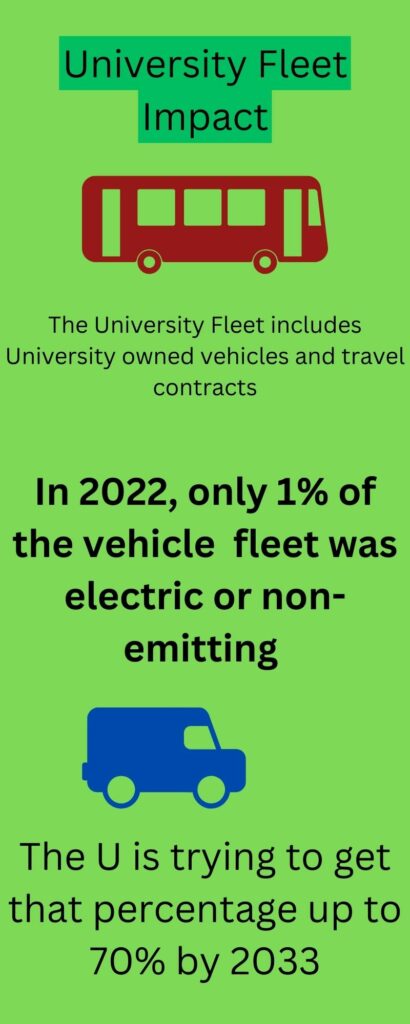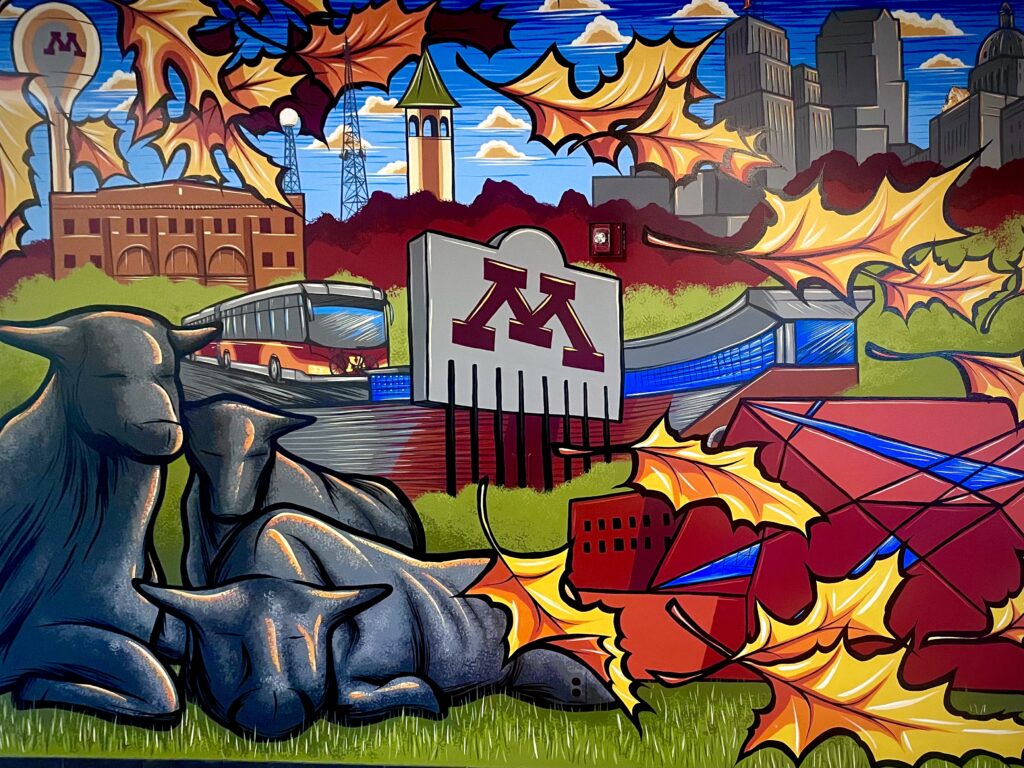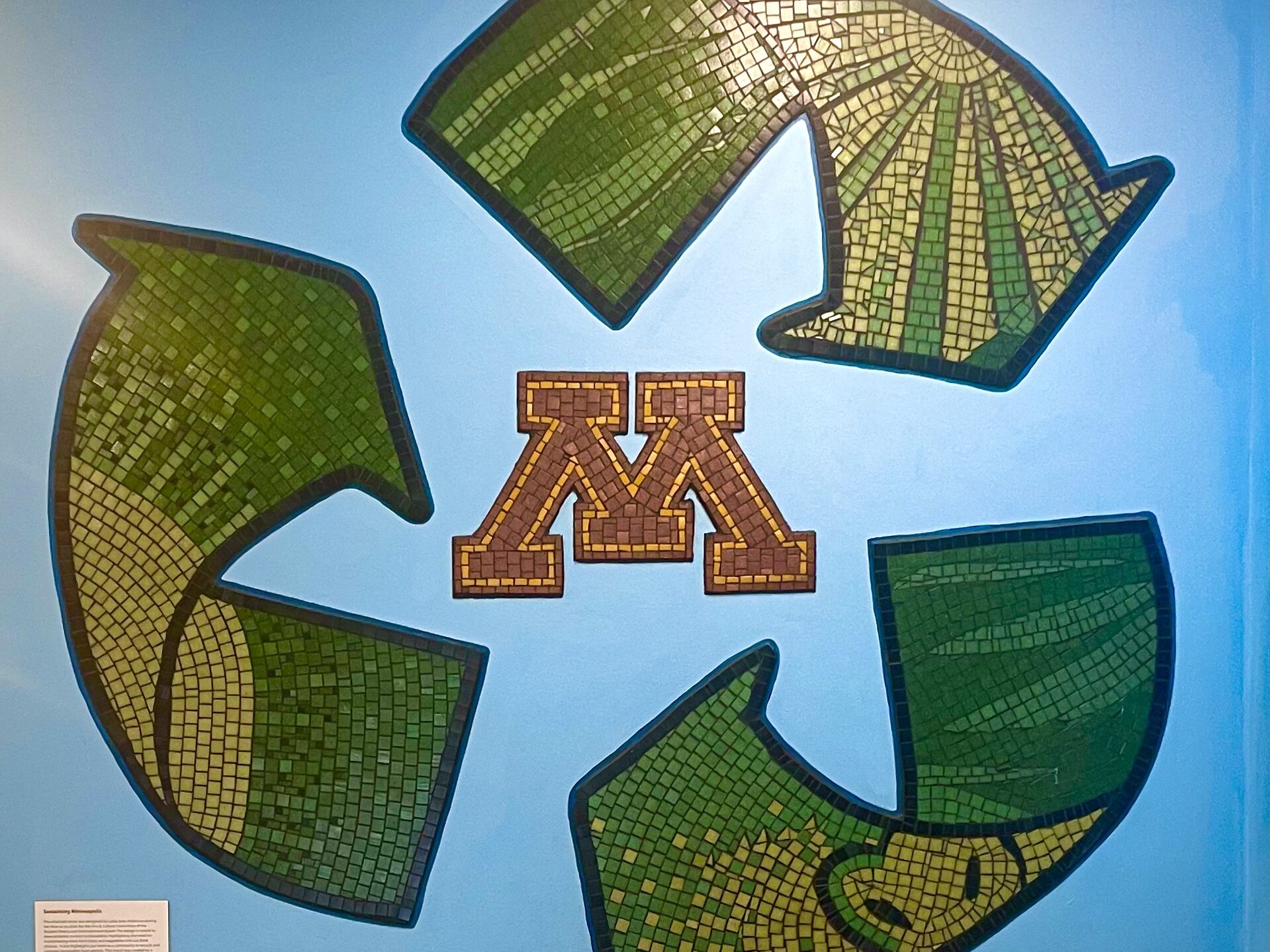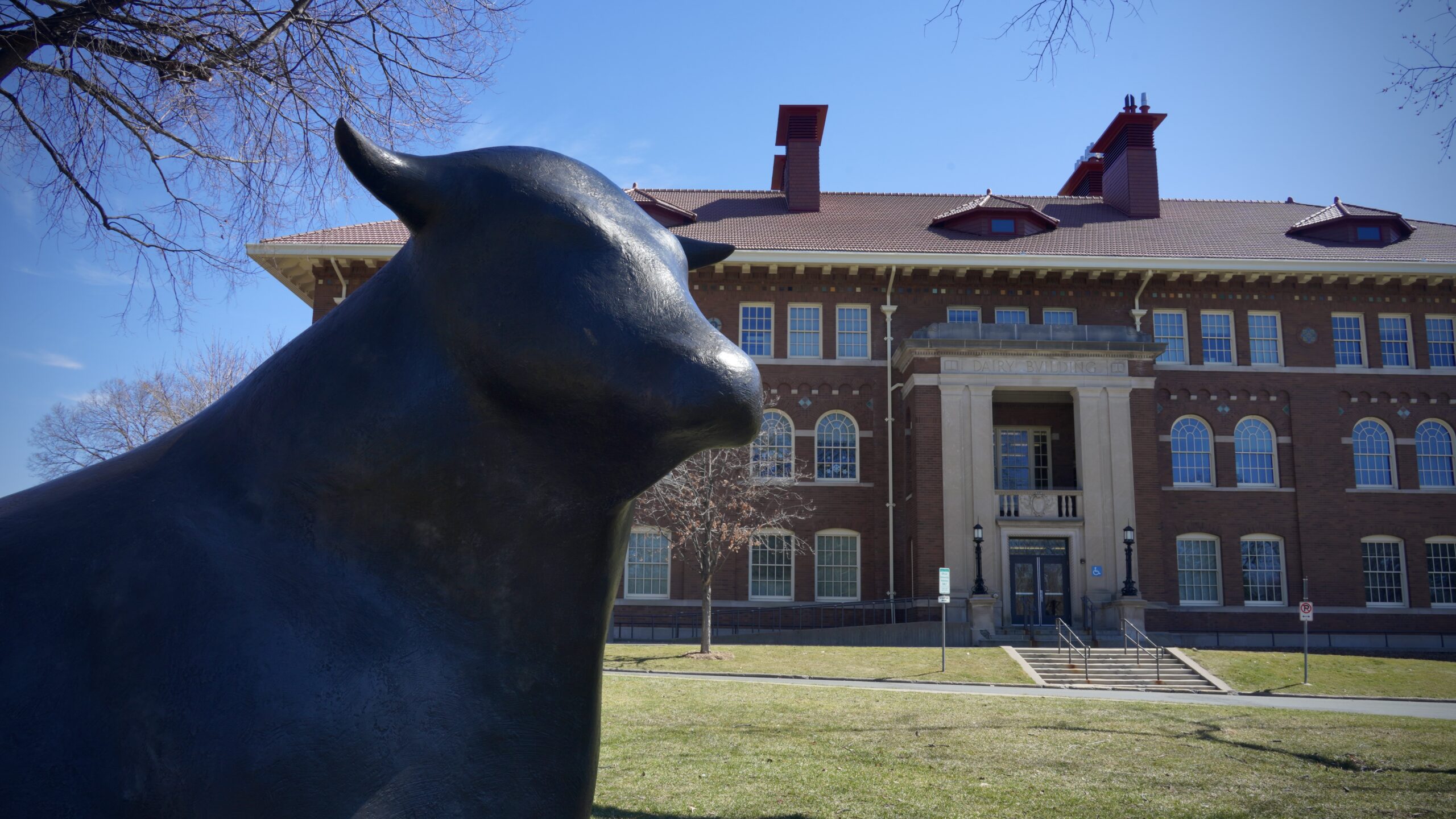Exploring Paths to Sustainable Solutions
By MaryKate Fenstermaker, Kevin Pfister and Hannah Jarosch
On Monday, April 22, Earth Day drew attention to environmental issues worldwide. The effects of climate change are becoming more noticeable even in Earth’s coldest regions, making these trends difficult to overlook, especially in places like Minnesota.
Media Credit: University of Minnesota Athletics
The University Student Body
At the University of Minnesota, the conversation about climate change is not limited to Earth Day. Students here are increasingly aware of the implications of a warming planet, and for many, this awareness is accompanied by a sense of anxiety. In a survey of about 70 students, over 50% were extremely concerned about climate change.
These University of Minnesota respondents are a part of a generation that will inherit the consequences of today’s environmental decisions. This concern is not unfounded, research shows that 52% of students are extremely or very concerned about climate change according to Yale’s Rising Leaders on Social and Environmental Sustainability survey.
Individual Impact
Although a large proportion of carbon emissions come from industrial institutions, individual actions, all the way down to throwing away your sandwich or driving your car, can have an effect on carbon emissions. Emissions can be attributed to human actions because regular people create the demand for more fossil fuel energy. Recognizing the personal impact on the environment can also be a powerful motivator for change.
There is a growing interest in quantifying individual contributions to greenhouse gas emissions. This includes everyday activities that may seem mundane but add up to significant environmental footprints.
The university campus fleet is composed of nearly all non-electric vehicles. The heating required in a dorm or apartment complex is a large contributor to carbon emissions. This also goes for the use of clothes dryers and other appliances like fridges. They all consume a considerable amount of energy and are used on a daily basis.
Media Credit: University of Minnesota Athletics
Whats Contributing on Campus?
Green Transportation
The university is exploring greener options like transportation, such as electric buses and hybrid vehicles, and encouraging the use of bicycles and walking. However, according to the Minnesota Daily, challenges such as charging infrastructure for a fleet, upfront costs, manufacturing limitations, harsh winters, and market availability create obstacles to only purchasing EVs and although hybrid cars emit fewer pollutants, traditional hybrids still operate with one electric motor and one gasoline engine.

Campus Transport
Campus Connector Route 121: 9.711 Miles
Campus Connector Route 122: 5.384 Miles
Campus Connector Route 123: 4.113 Miles
Energy Consumption
Campus heating and cooling is another area of concern. This is especially true in Minnesota. Heating a home in Minnesota can put 8,000 pounds of C02 in the atmosphere annually according to NPR.
As the temperatures in Minnesota fluctuate, the need for heating and cooling buildings becomes inconsistent.
2023 was the third warmest year on record for Minnesota, according to CBS News.
Universities often have large, energy-intensive facilities, and the challenge is to manage these in a way that minimizes emissions while still maintaining the same learning and housing environment.
In a poll, it was reported that 64% of students live in apartments on campus, 5% in dorms, and 29% in other residencies off campus.
If this represented the entire student population, the average student contributes 3.84 tons of CO2 every year.
According to a student carbon footprint analysis, the top three student energy contributor categories (which translate to CO2 consumption) were from dining (34%), showering (18%), and dorm electricity loads (14%). Males had a higher average footprint than females, graduate students had a higher average footprint than undergraduate students, and students in metropolitan areas had higher carbon footprints than students from rural areas and small towns.
When compared to individual activity contributions, it was found that “communal activities like dining in the dining halls, showering in communal showers, and studying in the library were all observed to lead to lower carbon footprints. These analyses can help identify student behavior changes that will be most effective at reducing carbon emissions.”
Food Consumption
Food waste is a significant contributor to individual environmental impact, as discarded food in landfills produces methane, a potent greenhouse gas. Reducing food waste can effectively lower one’s carbon footprint, a concept that resonates with sustainability-conscious students.
It is also important to note that the University of Minnesota serves beef in its dining halls, despite it being known for having one of the highest carbon footprints among foods. The production of red meat contributes to climate change through factors such as methane emissions from cows, extensive land use, and deforestation for cattle expansion, according to the World Resources Institute. Addressing food waste and making informed food choices can help reduce carbon emissions and promote sustainability.



Livestock like meat and dairy are responsible for 14.5% of manmade global greenhouse gas emissions, according to the Food and Agriculture Organization of the United Nations.
The University of Minnesota, like many institutions, is looking at ways to measure and reduce these individual contributions to climate change. This includes promoting energy-efficient appliances, improving the efficiency of campus buildings, and encouraging practices that reduce food waste. By taking these steps, universities can lead by example, showing students and the wider community that individual actions do matter.
According to Kate Nelson, the director of sustainability, the area where students have the most impact on sustainability is our waste system. The University of Minnesota Twin Cities has the highest Waste Diversion Rate in the Big Ten. UMN Twin Cities recovers more than 55% of waste from entering trash landfills.
“It has a lot to do with the more recent inclusion of organics, or composting and everyone plays a big part in knowing how to separate their waste and recycling and so forth,” Nelson said.
Waste diversion is the process of diverting and redirecting waste from landfills. Waste Recovery Services provides collection and disposal services for the Twin Cities Campus. According to The Environmental Protection Agency (EPA), waste diversion generates a host of environmental, financial, and social benefits, including conserving energy, reducing disposal costs, and reducing the burden on landfills and other waste disposal methods.


“You know, we all come from different backgrounds, different places where waste and recycling are handled differently, so it’s really important for students to learn how the University of Minnesota does it here in the Twin Cities and share that information and knowledge,” Nelson said.
Whether the university is on track to meet this carbon neutrality goal by 2050 will continue to be a matter of ongoing assessment. Such initiatives are essential components of the university’s goal to become carbon neutral by 2050.
The focus is not just on the problems but also on the solutions that can be implemented at an individual level. By evaluating and addressing the carbon footprint of everyday activities like using dryers, managing campus heating, and reducing food waste, students can take concrete actions to combat climate change. This approach empowers them to transform their concern and anxiety into positive change, fostering a culture of responsibility and sustainability on campus and beyond.
Adam Met: Uniting Communities and Driving Climate Action Through Harmony
April 17, 2024 | By MaryKate Fenstermaker
On April 17, Dr. Adam Met spoke at the University of Minnesota for a small group of student attendees about climate action. Met holds a PhD in human rights law, and he is the Founder and Executive Director of Planet Reimagined, a climate action and research organization. The organization recently celebrated the bipartisan congressional support for Common Grounds, a project seeking to co-locate wind and solar power on federal oil and gas land in order to accelerate the clean energy transition in the United States.
Met emphasized the power of collective effervescence, a sociological concept coined by Emile Durkheim, referring to the intense energy and sense of togetherness that arises when people come together in a shared space, like a on campus, or at a music concert. Met, who is a musician, discussed the organization’s newest project, Amplify. The project’s goal is to transform mainstream concerts into mainstage advocacy, and to use fans as a civic means of communication. Actions as simple as being encouraged to contact local representatives at concerts can empower young people to take meaningful action on climate change, creating a ripple effect of positive change beyond the event itself, according to Met.
Met highlighted the profound impact of influencers and celebrities subtly incorporating eco-friendly practices, such as using reusable straws, bamboo silverware, and vegan makeup in their daily routines. By seamlessly integrating sustainable habits without overt promotion, they are able to normalize green living, making it both appealing and attainable for their followers. This strategy not only leverages their influence to inspire positive climate actions but also fosters widespread adoption of eco-conscious behaviors, contributing to a more sustainable future.
73% of individuals recognize climate change as a pressing issue, with 78% of them actively engaged in addressing it, according to Met. Yet, only 3.5% of the population actively advocate for government intervention. Adam also discussed the challenges of persuading climate change deniers, pointing out the inherent difficulty in shifting someone’s deeply held beliefs. Instead, he suggested focusing efforts on motivating believers and the undecided to take tangible actions towards addressing climate change.
Addressing climate change at the municipal level requires collaboration among civil society, government, and corporations. Civil society raises awareness and mobilizes support, governments set policies and allocate resources, and corporations implement sustainable practices. Met encourages students passionate about climate change to contact their local government. “States work faster than governments, and that starts on the local level,” he said.
Curtsey of Planet Reimagined


